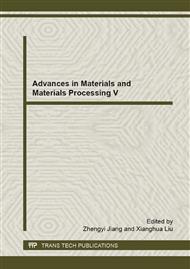[1]
J.S. a.W.V. Felix Zimmermann, in: 4rd International Conference on Hot Sheet Metal Forming of High-performance Steel, Lulea, Sweden, 2013, pp. pp.267-274.
Google Scholar
[2]
R. George, A. Bardelcik, M.J. Worswick, Journal of Materials Processing Technology, 212 (2012) 2386-2399.
Google Scholar
[3]
M.F. Mats Sigvant, Olof Hedegärd, Richard Johansson and Peter Nyström, in: 4rd International Conference on Hot Sheet Metal Forming of High-performance Steel, Lulea, Sweden, 2013, pp. pp.387-395.
Google Scholar
[4]
J.D.N. Seung Hoon Cha, Min Su Ahn, Pan Ki Seo, Kwang Woo Won and Byung Min Kim, in: 4rd International Conference on Hot Sheet Metal Forming of High-performance Steel, Lulea, Sweden, 2013, pp. pp.111-118.
Google Scholar
[5]
J. Speer, D.K. Matlock, B.C. De Cooman, J.G. Schroth, Acta Materialia, 51 (2003) 2611-2622.
DOI: 10.1016/s1359-6454(03)00059-4
Google Scholar
[6]
J.G. Speer, D.V. Edmonds, F.C. Rizzo, D.K. Matlock, Current Opinion in Solid State and Materials Science, 8 (2004) 219-237.
Google Scholar
[7]
H.L. Yi, P. Chen, Z.Y. Hou, N. Hong, H.L. Cai, Y.B. Xu, D. Wu, G.D. Wang, Scripta Materialia, 68 (2013) 370-374.
Google Scholar
[8]
O. MATSUMURA, Y. SAKUMA, H. TAKECHI, Transactions of the Iron and Steel Institute of Japan, 27 (1987) 570-579.
Google Scholar
[9]
Y. Sakuma, O. Matsumura, H. Takechi, Metallurgical Transactions A, 22 (1991) 489-498.
Google Scholar
[10]
D.V. Edmonds, K. He, F.C. Rizzo, B.C. De Cooman, D.K. Matlock, J.G. Speer, Materials Science and Engineering: A, 438–440 (2006) 25-34.
DOI: 10.1016/j.msea.2006.02.133
Google Scholar
[11]
E.S. Rowland, S. R. Lyle, Trans ASM, 37 (1946).
Google Scholar
[12]
C. Liu, Z. Zhao, D.O. Northwood, Y. Liu, Journal of Materials Processing Technology, 113 (2001) 556-562.
Google Scholar
[13]
E.J. Caron, K.J. Daun, M.A. Wells, International Journal of Heat and Mass Transfer, 71 (2014) 396-404.
Google Scholar
[14]
C. Wang, Y. Zhang, X. Tian, B. Zhu, J. Li, Science China Technological Sciences, 55 (2012) 1852-1857.
Google Scholar
[15]
M. Naderi, V. Uthaisangsuk, U. Prahl, W. Bleck, Steel Research International, 79 (2008) 77.
Google Scholar
[16]
S. Zhou, K. Zhang, Y. Wang, J.F. Gu, Y.H. Rong, Materials Science and Engineering: A, 528 (2011) 8006-8012.
Google Scholar


